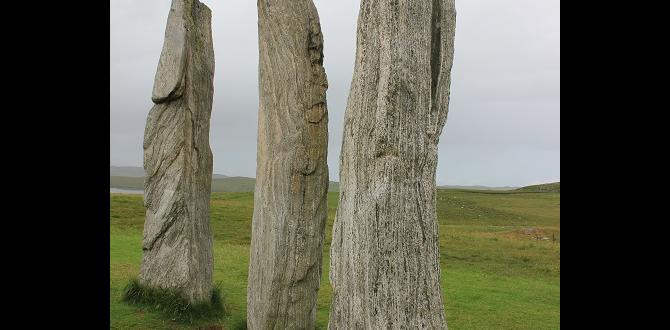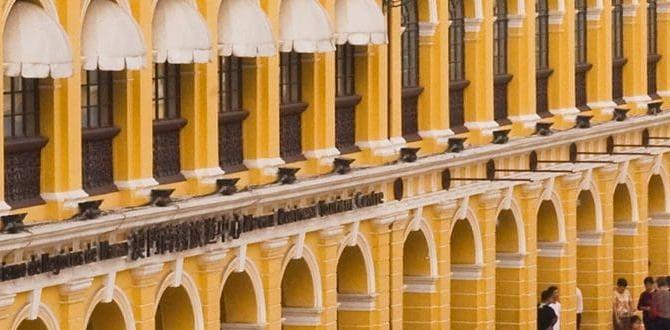Embark on a Basque Country self-guided food tour to discover its most essential and delicious eats. This guide unlocks a world of pintxos, cider houses, and regional specialties, making culinary exploration simple, enjoyable, and unforgettable for every traveler.
Thinking about exploring the vibrant flavors of Basque Country but feeling a little overwhelmed by where to start? It’s a common travel puzzle! You want to taste the real Basque experience, but navigating unfamiliar menus and culinary traditions can feel daunting. Don’t worry, this guide is designed to make your self-guided food adventure completely stress-free. We’ll walk you through the must-try dishes and essential culinary stops, so you can focus on savoring every delicious bite. Get ready to discover the genius of Basque cuisine!
Your Essential Basque Country Self-Guided Food Tour: A Culinary Adventure Awaits
Basque Country, a region straddling the border of northern Spain and southwestern France, is a food lover’s paradise. Renowned for its innovative chefs and deeply rooted culinary traditions, it offers a gastronomic journey unlike any other. Forget rigid itineraries; a self-guided food tour allows you to delve into this edible wonderland at your own pace, soaking in the culture and the incredible flavors. From the bustling pintxo bars of San Sebastián to the traditional cider houses of Gipuzkoa, this guide will equip you with the knowledge to navigate and savor the very best of Basque eats.
We’ll cover everything from what makes pintxos so special to where you can find the most authentic flavors. This isn’t just about eating; it’s about understanding the heart and soul of Basque culture, one delicious bite at a time. So, grab your appetite and let’s embark on this delectable journey!
Understanding the Heart of Basque Cuisine
Basque cuisine is more than just food; it’s a way of life. Rooted in fresh, seasonal ingredients and a deep respect for tradition, it’s a culture fiercely proud of its culinary heritage. Two key aspects define the Basque food scene: the pintxo and the txikiteo.
The Art of the Pintxo
Pintxos are miniature culinary masterpieces, often described as the Basque version of tapas. However, they are distinct. While tapas are typically served free with a drink in many parts of Spain, pintxos are usually ordered and paid for individually. They are often served on a slice of bread and held together with a toothpick (hence “pintxo,” meaning “spike”).
What makes them genius?
- Variety: The sheer diversity is astounding. You’ll find everything from simple anchovy and pepper combinations to elaborate creations featuring foie gras, seafood, and local cheeses.
- Social Aspect: Pintxos are meant to be enjoyed standing at the bar, with friends, accompanied by a small drink like a zurito (small beer) or a glass of local wine or cider.
- Affordability: While some gourmet pintxos can be pricier, many are very affordable, allowing you to sample a wide range of flavors without breaking the bank.
A key element of enjoying pintxos is the txikiteo, a Basque tradition of bar-hopping. You might visit several bars in one evening, enjoying one or two pintxos and a drink at each before moving on to the next.
Local Ingredients: The Soul of Basque Flavors
Basque Country boasts incredibly rich land and sea, providing the foundation for its exceptional cuisine. Key ingredients include:
- Seafood: The Cantabrian Sea offers abundant fresh fish and shellfish. Bacalao (cod), gilthead bream, hake, and anchovies are staples.
- Vegetables: Peppers (especially the Padrón and Espelette varieties), beans (such as Tolosa black beans), and artichokes are frequently used.
- Meats: Lamb, beef (especially from the local Rubia Gallega breed), and pork are common.
- Cheeses: Idiazabal cheese, a firm, smoked sheep’s milk cheese, is a regional treasure.
Your Self-Guided Basque Food Tour Itinerary: Essential Eats & Where to Find Them
This guide focuses on the Spanish Basque Country, a hub for culinary innovation and tradition. We’ll highlight key dishes and suggest areas renowned for their food scenes. Remember, the joy is in exploring!
1. The Pintxo Pilgrimage: San Sebastián (Donostia)
San Sebastián is arguably the gastronomic capital of Basque Country, if not Spain. The Old Town (Parte Vieja) is the undisputed heart of the pintxo experience. Prepare for sensory overload in the best possible way!
Must-Try Pintxos in San Sebastián:
- Gilda: The classic pintxo. A skewer of anchovy, pickled guindilla pepper, and an olive. Simple, salty, and perfectly balanced.
- Gâteau de Foie (Foie Gras Cake): A rich, creamy, and decadent creation often served warm.
- Txangurro a la Donostiarra: Baked spider crab, often served in its shell with a creamy, breadcrumb topping.
- Setas a la Plancha (Grilled Mushrooms): Often served with garlic and parsley, highlighting the earthy flavors.
- Bacalao (Cod): Many variations exist, including Bacalao al Pil-Pil (cod cooked in olive oil and garlic emulsified into a creamy sauce) and Bacalao Gipuzkoa (cod in a rich tomato sauce).
- Ostras (Oysters): Fresh and briny, a treat from the coast.
- Tortilla de Patatas (Spanish Omelet): While found everywhere, Basque versions often focus on quality potatoes and onion, executed to perfection.
Where to Go (Recommended Areas & Bars):
Wander through the narrow streets of Parte Vieja. Don’t be afraid to pop into any bar that looks inviting. Each has its specialties.
- Bar Txepetxa: Famous for its anchovy pintxos.
- La Viña Bodegón: Known for its legendary Basque cheesecake (Tarta de Queso) and classic pintxos. Go for dessert!
- Ganbara: Renowned for its sautéed mushrooms and seasonal specialties.
- A Fuego Negro: Offers more modern, innovative pintxos.
- Casa Urola: A more upscale option with exceptional grilled pintxos.
Pro Tip for Pintxo Hopping: Start early in the evening (around 7:00 PM) as bars get very crowded. Order one or two at a time and enjoy the atmosphere.
2. The Cider House Experience: Sidrerías in Gipuzkoa
A visit to a traditional Basque sidrería (cider house) is an essential cultural and culinary experience, especially during the cider season (January to April). These rustic establishments, often found in rural villages, serve young, tart Basque cider poured directly from enormous barrels.
The Sidrería Meal:
The typical sidrería menu is simple but profoundly satisfying:
- Cod Omelet (Tortilla de Bacalao): A thick, fluffy omelet studded with flaky cod. The first course.
- Fried Cod with Piquillo Peppers (Bacalao con Pimientos): Tender cod served with sweet, roasted piquillo peppers. The second course.
- Grilled Ribeye Steak (Chuletón): A hearty, thick-cut steak, often grilled over open flames and seasoned simply with salt. The main event.
- Cheese, Quince Paste, and Walnuts (Queso, Membrillo y Nueces): A classic dessert to finish.
How it Works:
You’ll sit at communal tables. When the sidrero (cider master) announces “Txotx!” (pronounced “chohtch”), it means the freshly tapped cider is ready. Guests gather around the barrel, and a small glass is filled directly from the stream. You shout “Txotx!” to alert others. You repeat this process for each barrel.
Where to Experience It:
The rolling green hills of Gipuzkoa, especially around the towns of Astigarraga, Hernani, and Usurbil, are dotted with sidrerías. Many are family-run and have been operating for generations.
| Example Sidrería | Location | Highlight |
|---|---|---|
| Zapiain Sagardotegia | Astigarraga | One of the most established, offering a classic experience. |
| Petritegi Sagardotegia | Astigarraga | Larger, known for its quality cider and traditional meal. |
| Eguzkilore Sagardotegia | Astigarraga | Offers a more intimate, family-run vibe. |
Reservations are highly recommended, especially during peak season. Many sidrerías offer transport options from nearby towns.
3. Bilbao’s Culinary Gems
Bilbao, a city revitalized by the Guggenheim Museum, also boasts a fantastic food scene, blending traditional flavors with modern flair. The Casco Viejo (Old Town) is again a prime spot for pintxos.
Bilbao Specialties:
- Gilda (again!): Bilbao has its own excellent versions.
- Bacalao a la Vizcaína: A classic Basque dish featuring cod in a rich, red pepper sauce (made with Biscay peppers).
- Marmitako: A hearty tuna and potato stew, traditionally made by fishermen on their boats.
- Pintxos at the Mercado de la Ribera: This vibrant market has numerous stalls offering fresh produce, meats, fish, and also a fantastic array of pintxos bars within it.
Where to Explore in Bilbao:
- Casco Viejo: Wander through its seven streets (Siete Calles) and discover countless bars.
- Plaza Nueva: A beautiful arcade with numerous bars famous for their weekend pintxo markets.
- Mercado de la Ribera: A must-visit for fresh ingredients and diverse food stalls.
Explore bars like Gure Toki (modern pintxos within the market) and Sorginzulo (classic pintxos in Plaza Nueva).
4. Beyond the Pintxo: Regional Delicacies
While pintxos are king, don’t miss these other essential Basque dishes:
- Percebes (Goose Barnacles): A delicacy from the rocky coastlines. They have a unique, intensely briny, and sea-like flavor. Best enjoyed simply boiled in seawater. A true taste of the ocean.
- Kokotxas: Hake or cod cheeks. A gelatinous, melt-in-your-mouth experience, often prepared in a creamy sauce (a la marinera) or fried.
- Pastel Vasco / Pastel Vasco (Gâteau Basque): A sweet shortcrust pastry pie, typically filled with pastry cream or black cherry jam. A delightful dessert or afternoon treat.
- Etxeko Borrega (Young Lamb): Roasted young lamb, known for its tenderness and subtle flavor, especially in the rural areas.
- Etxeko Eguna (Farmer’s Lunch): This often refers to hearty, home-style cooking found in rural inns, featuring stews, roasted meats, and local produce.
Planning Your Self-Guided Food Tour: Practical Tips
A self-guided tour offers flexibility, but a little planning goes a long way. Here’s how to make yours smooth and delicious:
Transportation
Basque Country is well-connected. Trains and buses link major cities like Bilbao, San Sebastián, and Vitoria-Gasteiz. For exploring cider houses or rural areas, renting a car can be beneficial, but parking can be challenging in cities. Consider local buses or even taxis for shorter distances.
Accommodation
Choose accommodation that suits your budget and touring style. City center hotels offer easy access to pintxo bars. Rural guesthouses (caseríos) can offer a more authentic experience, especially if you’re focusing on sidrerías.
Budgeting
Pintxos vary in price, typically ranging from €1.50 to €4 each. A good pintxo crawl might involve 4-6 stops, with 2-3 pintxos and a drink at each. This can add up, so set a daily budget. Sidrería meals are usually fixed-price, around €30-€40 per person, and are excellent value for the amount and quality of food.
When to Visit
The cider season (January-April) is ideal for experiencing sidrerías. Summer offers pleasant weather for exploring cities and coastal areas. Autumn brings harvest flavors. Spring is vibrant with blooming landscapes. Culinary festivals occur year-round, so check local listings.
Language
While Spanish is widely spoken, Basque (Euskara) is the co-official language. Many locals appreciate an attempt at basic Spanish greetings. In tourist areas, English is often understood, especially in restaurants and hotels.
Essential Tools for Your Tour
- Comfortable Shoes: You’ll be doing a LOT of walking, especially in San Sebastián’s Old Town.
- A Small Backpack: For essentials like a water bottle, camera, and any souvenirs. Consider packing discreet adult or child diapers if you anticipate needing extra comfort or security during long travel days or busy exploration periods. Brands like Depend or Always Discreet offer discreet, absorbent options perfect for stress-free travel.
- A Travel Journal: To jot down your favorite pintxos, bars, and memorable moments.
- A Portable Charger: For keeping your phone charged for navigation and capturing photos.
- A Phrasebook or Translation App: Helpful for navigating menus and communicating with locals.
A Taste of Tradition: Basque Cheese and Wine
No food tour is complete without exploring local beverages and artisanal products.
Idiazabal Cheese
This firm, smoked sheep’s milk cheese is a true Basque icon. Enjoy it on its own, melted into pintxos, or paired with quince paste. Look for the Denominación de Origen (DO) seal for authenticity.
Basque Wines
- Txakoli (Chacolí): A slightly effervescent, dry white wine, characteristic of the Basque coast. It’s often poured from a height to aerate it, giving it a subtle fizz. Perfect with seafood and pintxos.
- Rioja Alavesa: The Basque section of the famous Rioja wine region produces excellent reds, known for their Tempranillo grape.
- Txakoli (Red and Rosé Variations): While white is most common, you can also find red and rosé versions, though they are less Cclassical.
Local Markets
Visiting local markets like the aforementioned Mercado de la Ribera in Bilbao or the Mercado de la Bretxa in San Sebastián provides a fantastic glimpse into local life and offers opportunities to sample and buy regional products like cheese, cured meats, and olive oils.
Frequently Asked Questions (FAQ)
Q1: What is the best way to do a self-guided food tour in Basque Country?
A1: The best way is to pick a city or region (like San Sebastián’s Old Town or a cluster of sidrerías in Gipuzkoa) and explore on foot. Visit multiple bars or restaurants, trying one or two small dishes and drinks at each. Have a general idea of what you want to try but remain open to spontaneous discoveries.
Q2: Is it expensive to eat in Basque Country?
A2: It doesn’t have to be. While San Sebastián has Michelin-starred restaurants, a pintxo crawl can be quite affordable if you stick to classic pintxos and limit your purchases at each stop. Sidrería meals offer great value for money. Eating at local markets is also a budget-friendly option.
Q3: What are the absolute must-try dishes if I only have a few days?
A3: You must try a Gilda, Bacalao al Pil-Pil, grilled mushrooms (Setas a la Plancha), and the Basque cheesecake (Tarta de Queso) in San Sebastián. Experiencing a traditional Sidrería meal is also essential if visiting during the season. If in Bilbao, seek out Bacalao a la Vizcaína.
Q4: How do I choose which bars to visit for pintxos?
A4: Don’t overthink it! If a bar looks busy with locals, it’s usually a good sign. Look for bars with impressive displays of pintxos. Ask locals or your hotel for recommendations. The beauty of the tx







